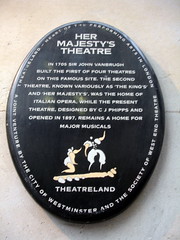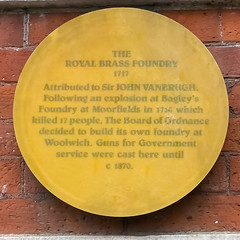Sir John Vanbrugh


Sir John Vanbrugh
(1664-1726)
architect, dramatist, and Knight Bachelor (from 1714)
Commemorated on 3 plaques
Sir John Vanbrugh architect and dramatist designed this house and lived here c. 1719-26
Maze Hill, Greenwich, London, United Kingdom where they designed and lived
Her Majesty's Theatre In 1705 Sir John Vanbrugh built the first of four theatres on this famous site. The second theatre, known variously as 'The King's' and 'Her Majesty's', was the home of Italian Opera, while the present theatre, designed by C J Phipps and opened in 1897, remains a home for major musicals
Charles II Street, London, United Kingdom where they built
The Royal Brass Foundry 1717 Attributed to Sir John Vanbrugh. Following an explosion at Bagley's Foundry at Moorfields in 1716 which killed 17 people, The Board of Ordnance decided to build its own foundry at Woolwich. Guns for Government service were cast here until с 1870.
No 1 St, Woolwich, United Kingdom where they designed



